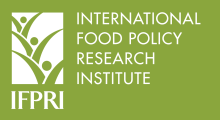Land, water, and agriculture in Egypt
Resource information
Date of publication
Dezembro 1994
ISBN / Resource ID
125556
Pages
51 pages : ill., tables 28 cm.
Copyright details
IFPRI adheres to the basic tenets of the Budapest Open Access Initiative, articulated in 2002 (subject to any applicable third-party rights and or confidentiality obigations). All applicable data are subject to IFPRI’s Institutional Review Board (IRB) guidelines. Copyright © 2013 International Food Policy Research Institute (IFPRI). All rights reserved.
The tax and subsidy system in Egypt in 1986-88 was very distorted, involving large, sectorally variegated, ouput taxes and subsidies. In agriculture, there were also major input subsidies and no charges for water. In this paper, an 11-sector, computable general equilibrium (CGE) model is used to capture this mix of policies, focusing on land and water use in agriculture and on the links between agriculture and the rest of the economy.


